 The violence was no accident. It was not a peaceful protest that spun out of control. Instead, as Rep. Elizabeth Cheney (R-WY) observed, in explaining her Jan. 11, 2021 vote to impeach, a then "President of the United States summoned the mob, assembled the mob, and lit the flame for this attack." It was, by the former President's deliberate design, a violent insurrection.
The violence was no accident. It was not a peaceful protest that spun out of control. Instead, as Rep. Elizabeth Cheney (R-WY) observed, in explaining her Jan. 11, 2021 vote to impeach, a then "President of the United States summoned the mob, assembled the mob, and lit the flame for this attack." It was, by the former President's deliberate design, a violent insurrection.
In its Executive Summary [PDF] released last week, the bipartisan House Select Committee to Investigate the January 6th Attack on the United States Capitol amplified its referral to the U.S. Department of Justice for potential prosecution of former President Donald J. Trump et al. under provisions of 18 U.S.C. §2383 - Rebellion or Insurrection, which expressly applies to anyone who "incites" an insurrection.
"A Federal Court", the Committee observed, "has already concluded that President Trump's statements during his Ellipse speech were "plausibly words of incitement not protected by the First Amendment."
Those "words", uttered by the then President on January 6, 2021 at what was billed as a "Stop the Steal Rally" at the Ellipse near the White House, included 22 occasions in which Trump urged his supporters to "fight". He told them: "We fight like hell. And if you don't fight like hell, you're not going to have a country anymore." Trump offered those words to an angry, armed mob gathered in D.C. that morning after his lawyer, Rudy Giuliani, at the same rally, called for "trial by combat."
While not mentioned in the Committee report's Executive Summary, the video recordings of the rally reflect that, as the former President was speaking, the crowd chanted: "Fight for Trump! Fight for Trump!"
Trump knew those he'd summoned to Washington D.C. on Jan. 6 were both armed and dangerous. According to Cassidy Hutchinson, an aide to then Chief of Staff Mark Meadows and one of the J6 Committee's star witnesses, Trump became irate when "thousands would not pass through the magnetometers" at the rally site, which had been erected by the Secret Service for his protection. She testified that the former President said: "I don't F'ing care that they have weapons. They're not here to hurt me."
Given the totality of the evidence assembled by the Committee over the past 18 months, detailing Trump's multifaceted effort to overturn and steal the election from the American people in order to retain the Presidency, a prosecutor would be well positioned to argue that, when Trump directed thousands of angry and armed supporters to move to the Capitol, he was extolling them to essentially carry out a violent coup and that the words uttered at the Ellipse were, indeed, "incitement" within the meaning of the Insurrection statute.
Indeed, his reported irate antics in response to his Secret Service detail's refusal to permit him to accompany the mob at the Capitol, suggests that the former President saw his own role as that of an insurrectionist Commander in Chief --- someone who could direct the actions of an armed mob that included members of extremist militias clad in tactical gear.
As defined by the U.S. Supreme Court in Brandenburg v. Ohio (1969), however, speech is prohibited only where it is (1) "directed at inciting or producing imminent lawless action", and (2) "likely to incite or produce such action." [Emphasis added.]
That definition provides room for Trump's legal counsel to argue the former President merely told the crowd to "go to the Capitol"; that it wasn't an incitement to "imminent" violence.
However, that plausible defense evaporated on Jan. 6, 2021 at 2:24 p.m. when Trump tweeted...

There can be no question but that Trump's 2:24 p.m. tweet was, per Brandenburg, both "directed at inciting or producing imminent lawless action" and that it was "likely to incite or produce such action."
Per the House Select Committee's Executive Summary, Trump's tweet about Pence's supposed betrayal was issued nearly an hour after a member of the White House staff told him at 1:25 p.m.: "They're rioting down at the Capitol." Trump replied, according to the testimony gathered by the panel: "Oh really? Let's go see." He then proceeded to view on television the violence carried out by the same mob he'd previously exhorted to go to the Capitol.
During his speech at the "Stop the Steal Rally", Trump repeated the Big Lies about election fraud. Immediately before stating, "We're going to walk down to the Capitol," Trump said, "it is up to Congress to confront this egregious assault on our democracy." Trump proclaimed: "All that Vice President Pence has to do is send it back to the States, and we become President."
Those remarks were preceded by a speech in which attorney John Eastman told the crowd that Pence held the fate of our Republic in his hands and "we are demanding" that the VP send the matter back to the States.
Trump knew he and Eastman were lying when they informed the crowd that Pence, as President Pro Tempore of the Senate, was empowered to either reject or send the certified electoral ballots back to the States on January 6.
According to evidence unearthed by the Committee, Eastman even told Trump that his proposal for Pence to refuse to tally the certified electoral votes would violate the Electoral Count Act (ECA) of 1877. Moreover, just days before Trump's speech at the Ellipse, a federal appeals court summarily rejected an appeal from a U.S. District Court order that had dismissed a lawsuit filed by Rep. Louie Gohmert (R-TX) on Trump's behalf.
According to the Final Report [PDF], at p. 436, Trump had not only been aware of the Gohmert lawsuit, but had also signed off on it. In that suit, Gohmert frivolously contested the constitutionality of the ECA law which had governed every Presidential election over the preceding 140 years.
U.S. District Court Judge David Carter later described the Eastman/Trump claims about the VP's supposed unilateral authority to reject or delay the counting of State certified electoral votes as "a coup in search of a legal theory."
The Final Report, at p. 429, reflects the gravity of lying about Pence's supposed authority to either reject or delay the counting of State certified electoral votes.
Whether or not Trump was aware of that specific "online chatter", there's no reasonable doubt but that, when he tweeted that Pence had essentially betrayed "our Country and our Constitution", the then President knew his false accusation would likely produce imminent violence.
The moment he published the 2:24 p.m. tweet, horrified White House staffers likened it to pouring gasoline on a fire --- a perception that, per the Executive Summary, was echoed by events on the ground "both inside and outside" of the U.S. Capitol...
If the DOJ can secure testimony to confirm portions of the Committee's account currently based upon hearsay testimony, Trump's own words will eliminate any doubt about his callousness, as well as his criminal intent.
The Final Report, at pp. 595-596, reveals that, according to Hutchinson, prior to issuance of his 2:24 p.m. tweet, White House Counsel Pat Cipollone walked with Mark Meadows from the Chief of Staff's office to the dining room near the Oval Office where Trump was watching the events at the Capitol on TV.
Cipollone testified that he wanted Trump to issue a strong statement, directing Trump's angered supporters to leave the Capitol grounds.
Hutchinson testified that the two men returned to Meadows's office "minutes" after Trump issued his 2:24 p.m. tweet.
"You heard him, Pat," Meadows replied. "He thinks Mike deserves it. He doesn't think they are doing anything wrong." [Emphasis added]
It was no accident. Trump knew he was inciting violence. It's time for accountability.
 Ernest A. Canning is a retired attorney, author, and Vietnam Veteran (4th Infantry, Central Highlands 1968). He previously served as a Senior Advisor to Veterans For Bernie. Canning has been a member of the California state bar since 1977. In addition to a juris doctor, he has received both undergraduate and graduate degrees in political science. Follow him on twitter: @cann4ing
Ernest A. Canning is a retired attorney, author, and Vietnam Veteran (4th Infantry, Central Highlands 1968). He previously served as a Senior Advisor to Veterans For Bernie. Canning has been a member of the California state bar since 1977. In addition to a juris doctor, he has received both undergraduate and graduate degrees in political science. Follow him on twitter: @cann4ing


 Sunday 'Cutting Corners' Toons
Sunday 'Cutting Corners' Toons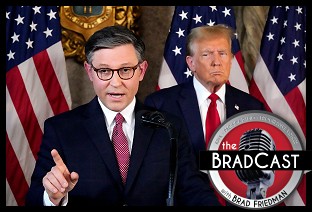 'A World of Tyrants,
'A World of Tyrants,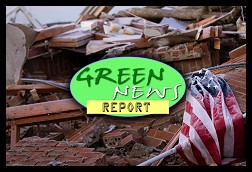 'Green News Report' 5/22/25
'Green News Report' 5/22/25
 'Dangerous Times': Climate Scientist Warns Trump 'Censorship' Endangering Nat'l Security: 'BradCast' 5/21/25
'Dangerous Times': Climate Scientist Warns Trump 'Censorship' Endangering Nat'l Security: 'BradCast' 5/21/25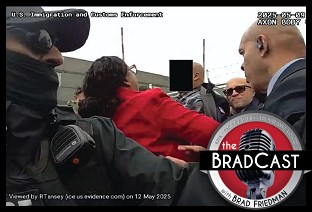 And Then They Came for Members of Congress...: 'BradCast' 5/20/25
And Then They Came for Members of Congress...: 'BradCast' 5/20/25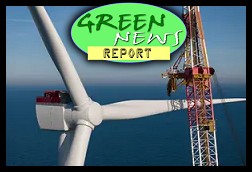 'Green News Report' 5/20/25
'Green News Report' 5/20/25 Appeals Court Blocks Last Route for Voters to Challenge Violations of the VRA: 'BradCast' 5/19/25
Appeals Court Blocks Last Route for Voters to Challenge Violations of the VRA: 'BradCast' 5/19/25 Sunday 'Now Hoarding' Toons
Sunday 'Now Hoarding' Toons Mad World:
Mad World: 'Green News Report' 5/15/25
'Green News Report' 5/15/25 Plane Corruption and the Future of the DOJ: 'BradCast' 5/14/25
Plane Corruption and the Future of the DOJ: 'BradCast' 5/14/25 'Deeply Evil': GOP Proposes Largest Medicaid Cuts in History: 'BradCast' 5/13/25
'Deeply Evil': GOP Proposes Largest Medicaid Cuts in History: 'BradCast' 5/13/25 'Green News Report' 5/13/25
'Green News Report' 5/13/25 And Then They Came for the Mayors...: 'BradCast' 5/12/25
And Then They Came for the Mayors...: 'BradCast' 5/12/25 Sunday 'New Guy, Old Guy' Toons
Sunday 'New Guy, Old Guy' Toons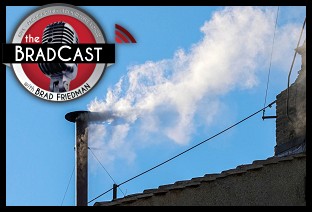 Blowing Smoke. At the Vatican and White House: 'BradCast' 5/8/25
Blowing Smoke. At the Vatican and White House: 'BradCast' 5/8/25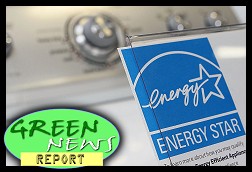 'Green News Report' 5/8/25
'Green News Report' 5/8/25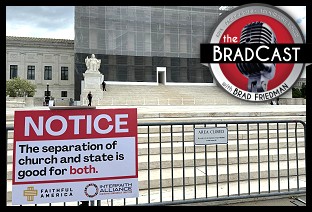 SCOTUS Weighs Public Funding of Religious Schools: 'BradCast' 5/7/25
SCOTUS Weighs Public Funding of Religious Schools: 'BradCast' 5/7/25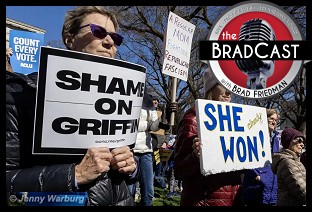 Trump Judge Blocks NC GOP Theft of 2024 Supreme Court Seat: 'BradCast' 5/6/25
Trump Judge Blocks NC GOP Theft of 2024 Supreme Court Seat: 'BradCast' 5/6/25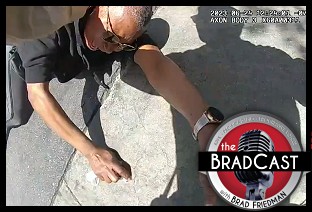 Prosecutors Quit After U.S Attny Strikes Deal With Felon Cop: 'BradCast' 5/5/25
Prosecutors Quit After U.S Attny Strikes Deal With Felon Cop: 'BradCast' 5/5/25 Trump Losing Streak Continues into SECOND Hundred Days: 'BradCast' 5/1/25
Trump Losing Streak Continues into SECOND Hundred Days: 'BradCast' 5/1/25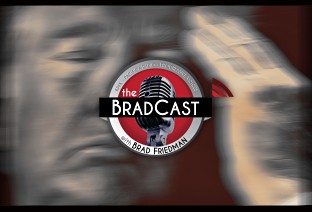 100 Daze (w/ Digby and Driftglass): 'BradCast' 4/30/25
100 Daze (w/ Digby and Driftglass): 'BradCast' 4/30/25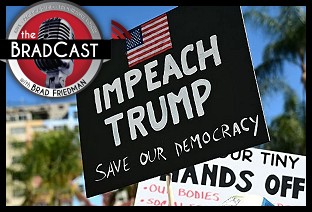 Campaign to 'Impeach Trump Again' Gains Fresh Momentum: 'BradCast' 4/29/25
Campaign to 'Impeach Trump Again' Gains Fresh Momentum: 'BradCast' 4/29/25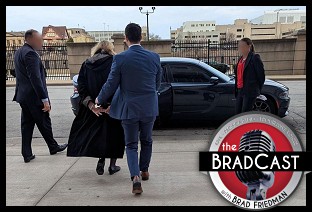 And Then They Came for the Judges...: 'BradCast' 4/28/25
And Then They Came for the Judges...: 'BradCast' 4/28/25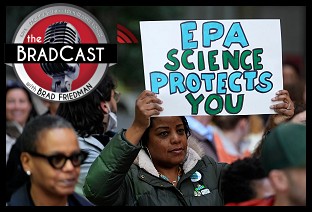 Trump EPA Guts Enviro Justice Office: 'BradCast' 4/24/25
Trump EPA Guts Enviro Justice Office: 'BradCast' 4/24/25
 VA GOP VOTER REG FRAUDSTER OFF HOOK
VA GOP VOTER REG FRAUDSTER OFF HOOK Criminal GOP Voter Registration Fraud Probe Expanding in VA
Criminal GOP Voter Registration Fraud Probe Expanding in VA DOJ PROBE SOUGHT AFTER VA ARREST
DOJ PROBE SOUGHT AFTER VA ARREST Arrest in VA: GOP Voter Reg Scandal Widens
Arrest in VA: GOP Voter Reg Scandal Widens ALL TOGETHER: ROVE, SPROUL, KOCHS, RNC
ALL TOGETHER: ROVE, SPROUL, KOCHS, RNC LATimes: RNC's 'Fired' Sproul Working for Repubs in 'as Many as 30 States'
LATimes: RNC's 'Fired' Sproul Working for Repubs in 'as Many as 30 States' 'Fired' Sproul Group 'Cloned', Still Working for Republicans in At Least 10 States
'Fired' Sproul Group 'Cloned', Still Working for Republicans in At Least 10 States FINALLY: FOX ON GOP REG FRAUD SCANDAL
FINALLY: FOX ON GOP REG FRAUD SCANDAL COLORADO FOLLOWS FLORIDA WITH GOP CRIMINAL INVESTIGATION
COLORADO FOLLOWS FLORIDA WITH GOP CRIMINAL INVESTIGATION CRIMINAL PROBE LAUNCHED INTO GOP VOTER REGISTRATION FRAUD SCANDAL IN FL
CRIMINAL PROBE LAUNCHED INTO GOP VOTER REGISTRATION FRAUD SCANDAL IN FL Brad Breaks PA Photo ID & GOP Registration Fraud Scandal News on Hartmann TV
Brad Breaks PA Photo ID & GOP Registration Fraud Scandal News on Hartmann TV  CAUGHT ON TAPE: COORDINATED NATIONWIDE GOP VOTER REG SCAM
CAUGHT ON TAPE: COORDINATED NATIONWIDE GOP VOTER REG SCAM CRIMINAL ELECTION FRAUD COMPLAINT FILED AGAINST GOP 'FRAUD' FIRM
CRIMINAL ELECTION FRAUD COMPLAINT FILED AGAINST GOP 'FRAUD' FIRM RICK SCOTT GETS ROLLED IN GOP REGISTRATION FRAUD SCANDAL
RICK SCOTT GETS ROLLED IN GOP REGISTRATION FRAUD SCANDAL VIDEO: Brad Breaks GOP Reg Fraud Scandal on Hartmann TV
VIDEO: Brad Breaks GOP Reg Fraud Scandal on Hartmann TV RNC FIRES NATIONAL VOTER REGISTRATION FIRM FOR FRAUD
RNC FIRES NATIONAL VOTER REGISTRATION FIRM FOR FRAUD EXCLUSIVE: Intvw w/ FL Official Who First Discovered GOP Reg Fraud
EXCLUSIVE: Intvw w/ FL Official Who First Discovered GOP Reg Fraud GOP REGISTRATION FRAUD FOUND IN FL
GOP REGISTRATION FRAUD FOUND IN FL

































